It is easy to forget that in its heyday the painted panorama was the equivalent of the Pathé newsreel, which followed a century later. Images of cities or historic events, drawn up laboriously in the round to represent a 360-degree viewpoint, had to be captured from the roof of the tallest suitable building. The finished work, transferred to a larger scale, would line the walls of a specially built rotunda, to which the paying public came. Napoleon planned a dozen in Paris, showing his greatest triumphs, but ran out of time. Now, due to the conditions involved, very few panoramas survive: some were burnt by the lamps used to illuminate them into the night, some damaged irreparably as they were taken city to city, even continent to continent, and many more have seemingly been lost without trace.
One of these emerged into the light last summer. Although the patent for panoramas was claimed by the Englishman Robert Barker in 1787, London was soon challenged by Paris in the trade. Pierre Prévost was the most industrious of the French artists involved and the sketch sold to the Museum of London last summer is a rare survival of his work (the Louvre has a fragment of his view of Constantinople). Merely 20 feet (seven metres) long, it is a sketch for a lost full version, produced in 1817.
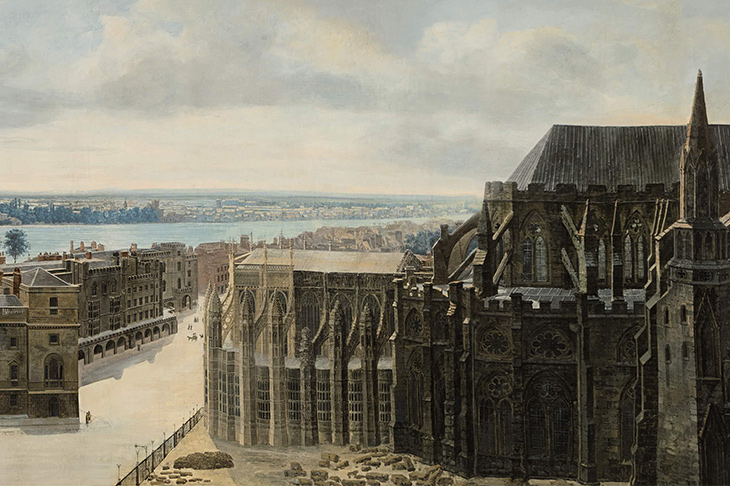
A panoramic view of London, from the tower of St Margaret’s Church, Westminster (detail; c. 1815), Pierre Prévost. Museum of London
Prévost caught London in 1815, on the eve of the peace with France. It was a moment of reflection before the flurry of construction and expansion that would soon follow. The recently built Strand Bridge was yet to open to the public with the new name of Waterloo Bridge. The Law Courts that John Soane struggled to transform from a Palladian-style muddle, barnacled to Westminster Hall, were still well in the future – as was his later elaboration of the Whitehall elevation of Inigo Jones’s Banqueting House.
Prévost’s scene can be compared to the supreme work in the genre, Thomas Girtin’s Eidometropolis of 1798–99, only extant in a set of watercolour drawings in the British Museum. Prévost is precise, a recorder of the scene below, and far less concerned than Girtin with capturing atmospheric details such as shifting light effects and the gradual darkening of the skies to the east and on the riverside, where industry was. While there are paltry puffs of smoke from premises near the river, he gives no hint of the polluting pall of reality. Instead, he shows cattle grazing in St James’s Park, the random life and cheerfully unzoned urban pattern, exemplified by the ‘paper manufactory’ (as it is lettered) standing cheek by jowl with the Middlesex Guildhall (where the Supreme Court now sits). There are shops, a butcher included, fronting the open ground that will soon become Parliament Square. A nearby street is closed off to traffic with posts and a bar: shades of measures to come at Downing Street. Prévost worked from the tower of St Margaret’s Church, Westminster so that the flattened scroll is bookended by Westminster Abbey.
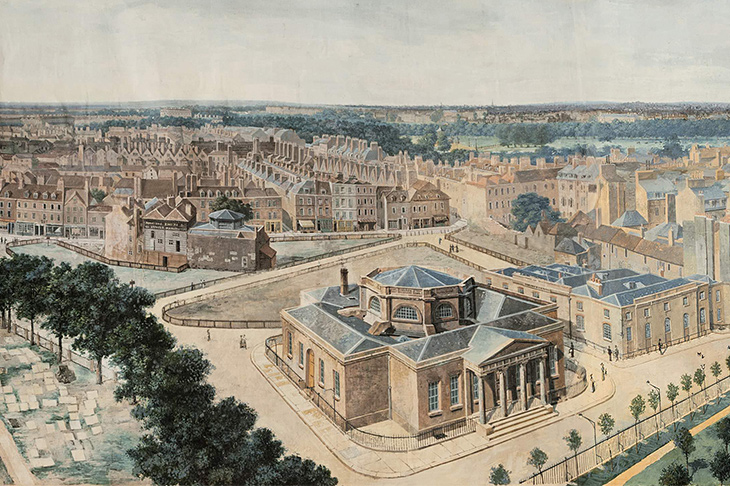
A panoramic view of London, from the tower of St Margaret’s Church, Westminster (detail; c. 1815), Pierre Prévost. Museum of London
The Museum of London has two other panoramas on display, in particular the so-called ‘Rhinebeck’ view of London, dating from around 1810, found lining a barrel of pistols in a house on the Hudson River. The anonymous artist takes his viewpoint high above the Thames, and places riverside landmarks and enterprises at the centre of the action. It offers a snapshot of London as port and industrial heartland and, though very different in style, is complementary to Pierre Prévost’s civic scene of central London. The latter was also found in mysterious circumstances, somewhere in France, and it is tempting to wonder how many more survive as inconspicuous dusty rolls in the corners of attics.
To see these surviving panoramas also suggests that it might be time for an exhibition – a successor to the unforgettable ‘Panoramania!’ held at the Barbican in 1988–89 – uniting fragments, sketches, working drawings and the architecture of that hugely popular attraction that swept the capitals of Europe and America for a short while before being consigned to memory.

A panoramic view of London, from the tower of St Margaret’s Church, Westminster (c. 1815), Pierre Prévost
‘Panorama: London’s lost view’ is at the Museum of London.
Unlimited access from just $16 every 3 months
Subscribe to get unlimited and exclusive access to the top art stories, interviews and exhibition reviews.


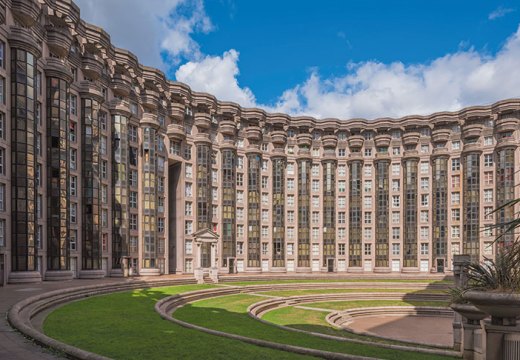
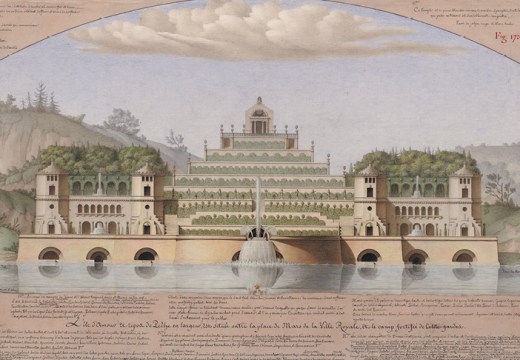
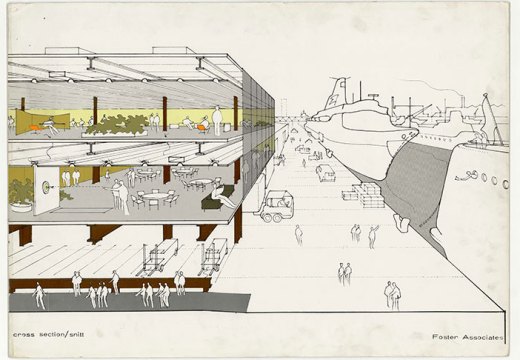









![Masterpiece [Re]discovery 2022. Photo: Ben Fisher Photography, courtesy of Masterpiece London](http://www.apollo-magazine.com/wp-content/uploads/2022/07/MPL2022_4263.jpg)
It’s time for the government of London to return to its rightful home